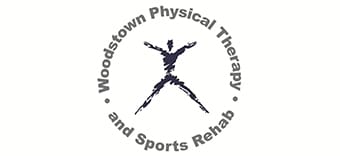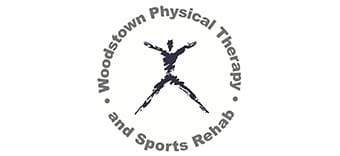Vestibular Therapy: A Comprehensive Treatment for Vertigo
Vertigo is a condition characterized by the sensation of spinning or dizziness, often accompanied by nausea and loss of balance. Various factors, such as inner ear problems, head injuries, or neurological disorders, can cause it. If left untreated, vertigo can significantly affect a person’s quality of life, causing physical and emotional distress. Fortunately, there are effective treatment options available, including vestibular therapy. This article will explore the benefits of vestibular therapy and, primarily, its effectiveness in improving your quality of life living with vertigo.
The experienced team at Woodstown Physical Therapy of Mullica Hill, NJ, proudly serves the local community with effective physical therapy and diagnosis, ensuring that your mobility and strength are restored, giving you a happier and healthier lifestyle.
What is Vestibular Therapy?
Vestibular therapy is a type of physical therapy that focuses on the vestibular system, a complex network of structures in the inner ear that is responsible for maintaining balance and spatial orientation. Vestibular therapy aims to improve the vestibular system’s function and reduce symptoms of vertigo, dizziness, and balance disorders.
How Does Vestibular Therapy Work?
Vestibular therapy involves a series of exercises and maneuvers that target the vestibular system and help the brain adapt to balance and spatial orientation changes. The treatment is performed under the guidance of a trained therapist and may include the following:
Balance Training
Balance training involves exercises that improve posture, strengthen muscles, and enhance stability. These exercises may include standing on one leg, walking on a balance beam, or performing specific movements to challenge the vestibular system.
Eye Exercises
Eye exercises are designed to improve eye tracking and visual fixation, essential for maintaining balance and orientation. These exercises may include focusing on a moving object, tracking objects with the eyes, or performing specific eye movements to reduce dizziness.
Canalith Repositioning Maneuvers
Canalith repositioning maneuvers are specific movements designed to move particles that cause vertigo out of the inner ear canal. These maneuvers are highly effective in treating positional vertigo, a type of vertigo triggered by changes in head position, such as lying down or getting up.
Habituation Exercises
Habituation exercises help the brain adapt to repetitive movements that trigger vertigo. These exercises may include head movements or walking on a treadmill with varying speeds and inclines.
Who Can Benefit from Vestibular Therapy?
Vestibular therapy can benefit anyone experiencing vertigo or balance problems, regardless of the underlying cause. It can be constructive for people with vestibular disorders, such as vestibular neuritis or Meniere’s disease, and those with a head injury or a stroke.
Vestibular therapy is also effective for older adults at risk of falls due to balance problems. By improving balance and stability, vestibular treatment can reduce the risk of falls and related injuries, major health concerns among seniors.
What Are the Benefits of Vestibular Therapy?
Vestibular therapy offers numerous benefits for people with vertigo or balances problems, including:
- Reduced Dizziness and Vertigo: Vestibular therapy is highly effective in reducing symptoms of dizziness and vertigo. By improving the vestibular system’s function, the brain can better adapt to changes in balance and spatial orientation, reducing symptoms.
- Improved Balance and Stability: Vestibular therapy can help improve balance and stability, making it easier for people to perform daily activities, such as walking or standing.
- Increased Confidence: By reducing symptoms of vertigo and improving balance, vestibular therapy can help people feel more confident and less anxious about performing daily activities.
- Reduced Falls and Related Injuries: Vestibular therapy can reduce the risk of falls and related injuries, a significant concern among older adults. By improving balance and stability, vestibular treatment can help prevent falls and improve the overall quality of life.
Types and Alternatives to Vestibular Therapy
There are different types of vestibular therapy, and the type of therapy recommended will depend on the individual’s specific symptoms and diagnosis. Some of the most common types of vestibular therapy include:
- Canalith Repositioning Maneuvers: As mentioned earlier, canalith repositioning maneuvers are a type of vestibular therapy that is highly effective in treating positional vertigo. The most commonly used maneuver is the Epley maneuver, which involves a series of head movements designed to move particles that cause vertigo out of the inner ear canal.
- Vestibular Rehabilitation: Vestibular rehabilitation is a type of therapy designed to improve balance coordination and reduce symptoms of dizziness and vertigo. This type of therapy involves a series of exercises tailored to the individual’s specific needs, including balance training, eye exercises, and habituation exercises.
- Tai Chi: Tai Chi is a Chinese martial art that involves slow, deliberate movements and deep breathing. It has been shown to improve balance, reduce falls among older adults, and may also be helpful for people with vestibular disorders.
- Yoga: Yoga is a mind-body practice involving physical postures, breathing exercises, and meditation. It has been shown to improve balance, reduce falls among older adults, and may also be helpful for people with vestibular disorders. Yoga is a trendy addition to your regular therapy exercises.
- Aquatic Therapy: Aquatic therapy is physical therapy performed in water. It can be conducive for people with balance problems, as the buoyancy of the water can reduce the risk of falls and make it easier to perform exercises.
- Brandt-Daroff Exercises: Brandt-Daroff exercises are vestibular rehabilitation used to treat benign paroxysmal positional vertigo (BPPV). The exercises involve a series of head and body movements designed to move particles that cause vertigo out of the inner ear canal. These exercises can be done at home and are typically performed several times daily for a few weeks.
In general, vestibular therapy is a safe and effective treatment option for people experiencing vertigo or balance problems. With proper diagnosis and treatment, many people can manage their symptoms, improve their quality of life, and restore their confidence.
Your Partner in Quality Physiotherapy
Vertigo and balance problems can significantly impact a person’s quality of life, but proper diagnosis and treatment can manage and reduce symptoms. Vestibular therapy is a safe and effective treatment option for people experiencing vertigo or balance problems.
By improving the vestibular system’s function, vestibular therapy can reduce symptoms of vertigo, improve balance and stability, and increase the overall quality of life. If you are experiencing symptoms of vertigo or balance problems, talk to your healthcare provider to see if vestibular therapy may be right for you.
During your next appointment with the adept team at Woodstown Physical Therapy of Mullica Hill, NJ, you can be sure you are receiving the best care and guidance you and your loved ones merit.

1-856-769-4564
84 E Grant St #3, Woodstown, NJ 08098
1-856-769-4564
167 Bridgeton Pike, Mullica Hill, NJ 08062
woodstownpt@gmail.com




